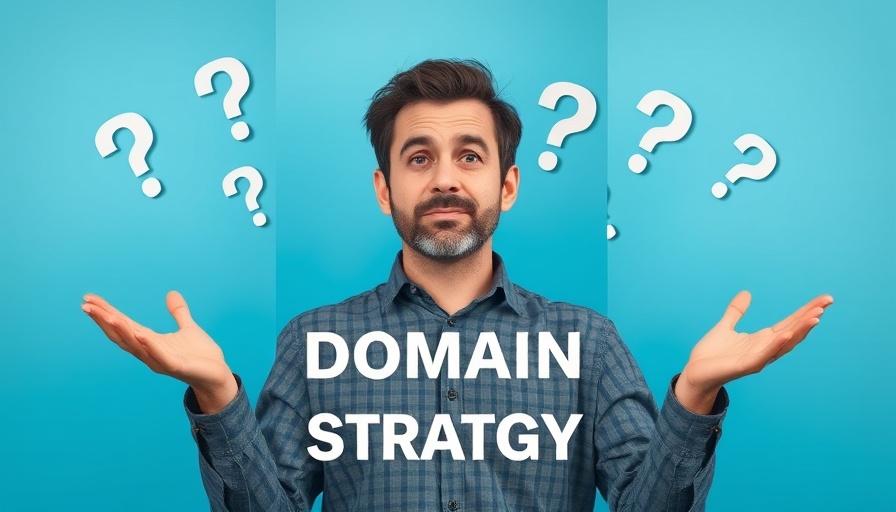
Making Sense of SEO: One Domain vs. Many
Welcome to the great SEO debate: should businesses stick with one domain or spread their wings with multiple domains? It's a question that keeps marketing managers awake at night, tossing and turning like a cat trying to find the comfiest nap spot. But don’t worry, we’ll navigate this web of confusion together, armed with insights from the latest Whiteboard Friday by Peter Richman from Plug and Play.
In How to Decide Between One Domain or Many for SEO, the discussion dives into the complexities of choosing the right domain strategy, exploring key insights that sparked deeper analysis on our end.
Understanding the Dilemma
Many times, businesses find themselves with an SEO challenge that seems to pop up more often than a whack-a-mole. They’ve grown, merged, or expanded into different territories, spawning a collection of websites—each with their own top-level domain like a kid with a sticker collection. But here’s a thought: is it time to consolidate these domains into one superhero site? The answer isn’t as straightforward as a toddler’s drawing.
Why Go with One Domain?
Think about it. Having one domain can be like having a really awesome yard sale instead of multiple garage sales scattered across the neighborhood. It’s easier to manage, cheaper to maintain, and hey, it boosts your domain authority like a morning coffee boost! You see, when all your digital ducks are in a row, you attract more links to your site. It’s a bit like having one giant magnet instead of several weak ones; you’ll pull in more visitors faster!
The Importance of Audience and Messaging
However, there’s a bit of a twist—like in a soap opera. If your audience segments are very different, it might be beneficial to keep those separate domains. Imagine trying to sell pizza next to a vegan sushi shop. If the messaging and audiences are diverging like a river branching into tributaries, keeping separate sites could actually increase conversions faster than you can say 'miso soup.' How clear are you communicating your brand's value to each audience? This is a true marketing 101 realm!
The Cost Factor: One vs. Many
Now let’s tackle the elephant in the room: costs. Maintaining multiple sites can feel like paying for a gym membership, a yoga class, and buying home workout equipment – all at once! One domain can save you time and resources, making your budget happier, while maximizing your SEO equity. It’s the path of least resistance, sort of like how we all gravitate toward the couch on a Friday night!
SEO Strategy: Pooling Resources
In a contest of strength, pooling your resources can lead to incredible gains. The rule of thumb is simple—when your sites are combined, you can focus all your energy on enhancing domain authority. Think of it like a group project in school; sure, you could work alone, but combining efforts will ultimately yield a more fruitful outcome. So why invest in several domains when one can do the heavy lifting?
Conclusion: A Logical Path Ahead
In the grand scheme of things, choosing between one domain or many boils down to two big questions: audience needs and resource management. If they can effectively communicate and unify your messages, then one domain could serve you best, enhancing your online advertising efforts. But if your offerings are as varied as a buffet menu, keeping them separate may just be the right recipe to satisfy your visitors’ tastes.
So, what’s the final punchline? Whether sticking with one domain or expanding into many, ensure that your strategy aligns with your audience's needs and drives your business forward. After all, the world of digital marketing is much like navigating through a funhouse – it’s going to be confusing, but that’s what makes it entertaining!
 Add Row
Add Row  Add
Add 




Write A Comment